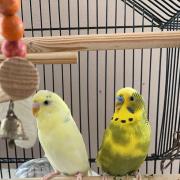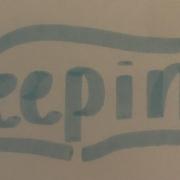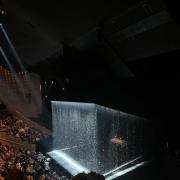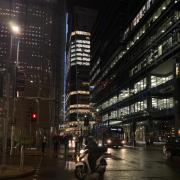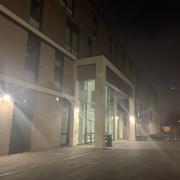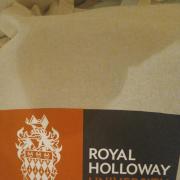
The last ten days of March saw a figure huddled in the light and airy space that is the genius creation of architect Norman Plastow - the gallery space created out of a narrow strip of the Wimbledon Society’s premises on the corner of Lingfield Road and Ridgway.
Artist Maya Brodzinska was there ready to greet both committed visitors to her canvases and casual passers-by on Sunday walks, curious enough to step inside the early Victorian building that houses the various strands of the Wimbledon Society, including the Museum of Wimbledon, a social club and a village hall, with the promise of some art on display.
Up a short and narrow flight of stairs, a compact exhibition space is revealed, with natural light enabled by two feature skylights and the lighting topped up by spotlights on the canvases. Not that Maya Brodzinska’s work needed a lot of help from electric light; her works generated their own luminosity, thanks to her clever use of oils and contrast with darker pigments in her swirling paintings or studied depictions of densely-packed leaves.
Brodzinska moved to Britain from Poland forty years ago, and recalls a time best forgotten; a Britain that was as insular as it was unsophisticated, revealed in the quality of its sitcoms and in the breadth of its journalistic reporting, which was more Empire and Commonwealth than European, more Little Britain than a world stage.
Asked if her work held any Polish inspiration or influence, she shook her head, and mused on the notion of inspiration, declining to name or even acknowledge any particular artist or school of painting as shaping her work. “I don’t reveal my secrets”, she said, with a wry smile and wag of her finger, referring both to her personal style and her technique. Some of the canvases look almost like textiles, such is the extraordinary effect she creates of texture and woven strands, so that some of the rich, vibrant coloured works look as much like tapestries as paintings. A section of earlier works has something of Mondrian about it, though I dare not suggest is as I sense the reluctance on her part to be labelled or pigeon-holed as belonging to any movement. “Inspiration is an interesting thing”, she opines. “It can come from anything. It’s not necessarily about trying to re-create something you’ve seen, it can just come to you. I learned to paint at Art School and over the course of time, you find you go a certain way”. Brodzinska praises England for its openness to experimentation, unshackled by conventions found on the Continent of sticking to received ideas about what is “good” art or literature. She acknowledges that with a freer approach to education comes a lack of academic rigour, discernible by a lack of knowledge and facts, which are essential to underpinning intellect. Given the choice, however, she seems very content to have been given the chance to make Britain her home and nurture her vibrant and intriguing style of painting.














